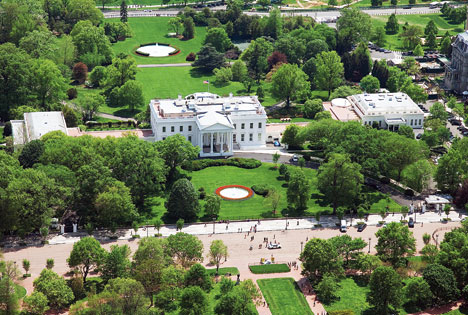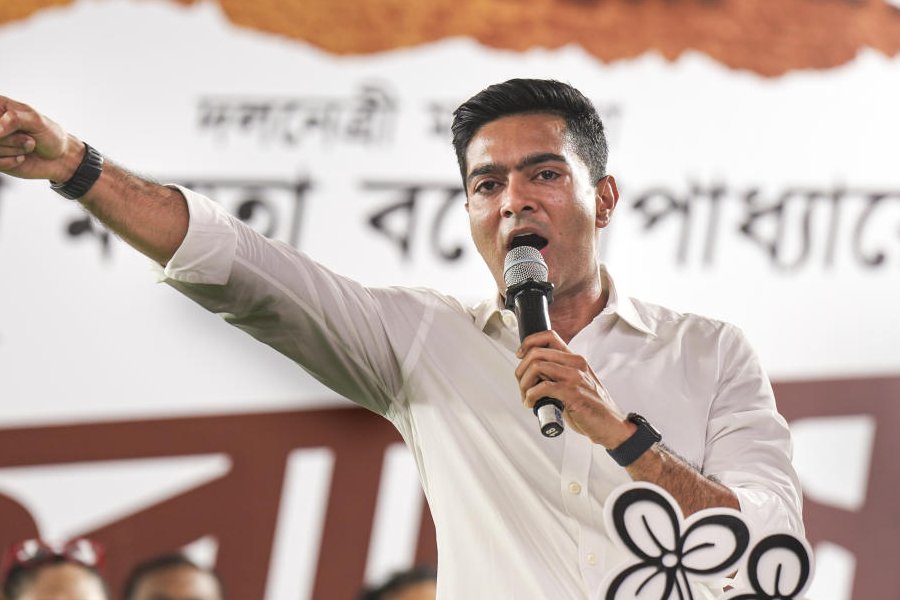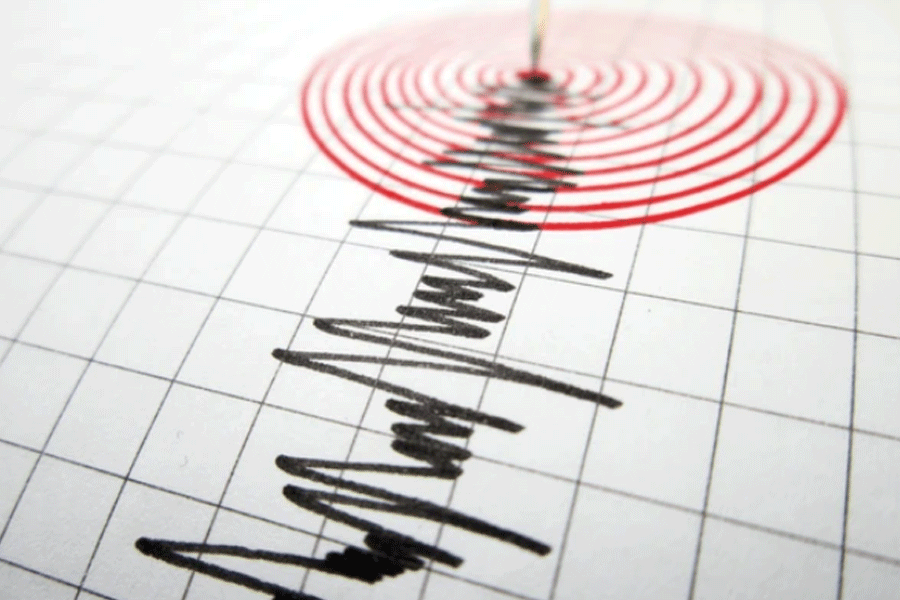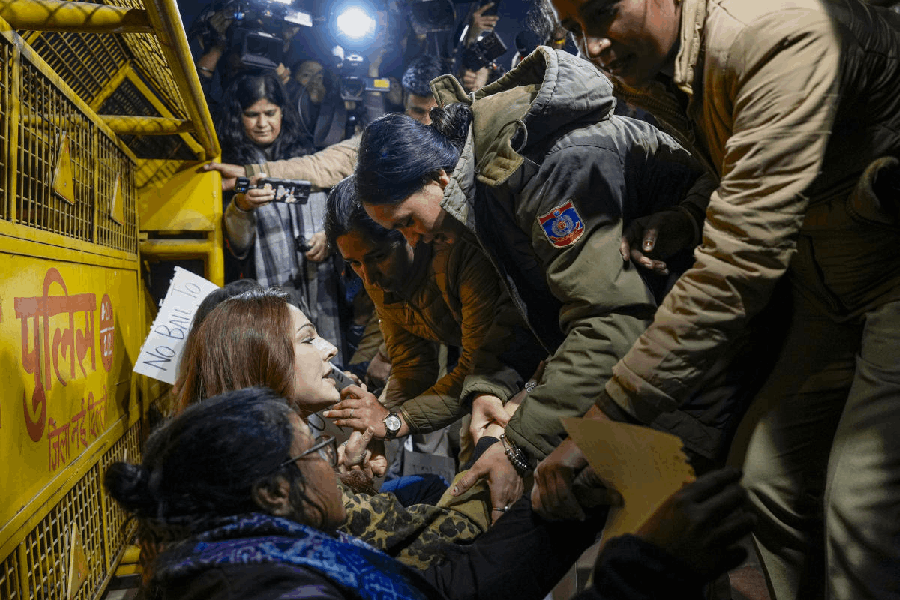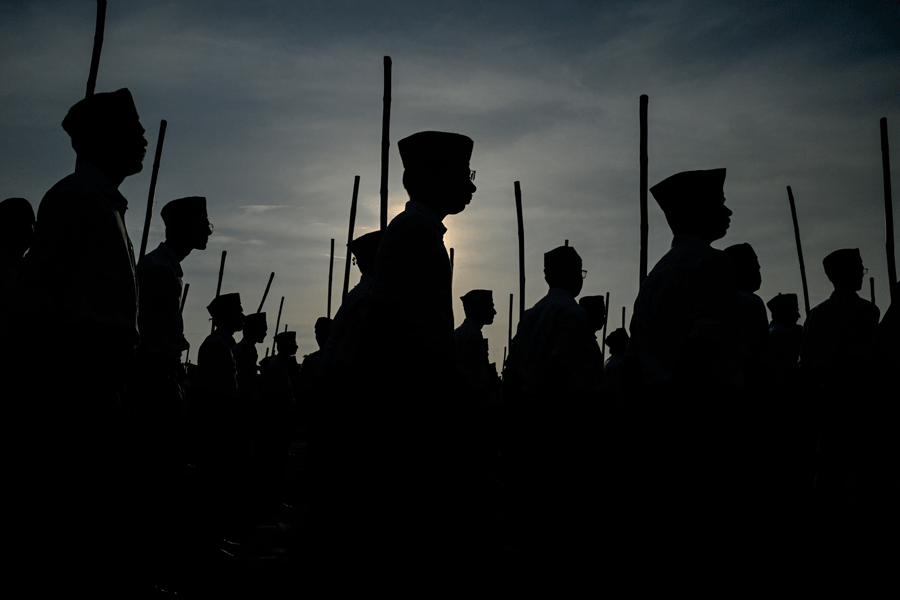
Growing up in Calcutta, the mention of a white house has elicited an unblinking immediate response — Victoria Memorial. Years later a white house, to me, came to mean the edifice at 6 Prafulla Sarkar Street. But here I was now at the White House. When I moved to the United States in 2015, I carried along with my luggage the inertia of being a Calcuttan. Hence, it was only when I stood before the President’s mansion, soaking in the pristine white, sans the customary blue stripes, did it dawn upon me that I was no longer in the City of Joy.
1600 Pennsylvania Avenue in downtown Washington DC has, over the last two centuries, evolved from an address to a living embodiment of power, democracy and the centre of gravity of a new world order. Built in 1800, the White House has stood tall in its majestic splendour as the most recognisable symbol of the United States of America. The elegant columns of the White House support much more than the weight of the building, for they also bear the weight of being the symbol of America’s political, economic and diplomatic dominance to the world.
My first residence upon moving to D.C. was an apartment just over a kilometre from the POTUS’ residence. About the same distance from Birla Planetarium to Park Street. Perfect for a jog on a breezy spring or autumn evening. I do distinctly remember my first reaction to the White House when I first laid eyes upon it from beyond its boundary fence — “That’s it? Is that all?” Needless to say, I was underwhelmed. It looked way bigger on House of Cards and The West Wing. Nearly three years later, it was only once I got up close that I realised how immense it actually is. To tourists who view the main north facade of the building, it comes across as a placid two-storeyed mansion while it actually has six levels and a staggering 132 rooms.
Like any old building worth its salt, the White House, too, is replete with fascinating historic anecdotes, tantalising rumours, a hint of scandal and, of course, a ghost or two. (The most persistent being the ghost of Abraham Lincoln patrolling its hallways.) Not many beyond America’s shores are aware that merely 14 years after being built, the White House was stormed by British forces and set on fire in 1814. Two years into the War of 1812 between the United States and Great Britain, the British captured Washington and torched the Executive Mansion (and the US Capitol) in retaliation for the American destruction of York (modern-day Toronto).
It was restored again by 1817 in time to welcome the new President James Monroe. Of course, the White House has been attacked several times since in movies and famously blown to smithereens by the alien spaceship in the Will Smith starrer Independence Day (1996). As a young Calcuttan growing up in the ’90s, I must also add the countless times the White House has been the target of attacks hurled from the loudspeakers of the Maidan’s Brigade Parade Ground and Esplanade.

The WH tour
The WH has stood as an enduring witness to countless handshakes, hundreds of bilateral agreements and dozens of declarations, all of which have altered the course of history (for better or worse). Indeed, no other building but the White House can claim to have the eyes of the world steadfastly trained upon its daily goings-on at any given moment.
Nor can a single soul deny being touched, directly or indirectly, by the consequences of decisions made within its sandstone walls. A tour of the building, then, isn’t just a stroll through ornate rooms but a walk through the living history of the modern world. It was with this rather weighty acknowledgement that I embarked on the tour on a pleasant Friday morning.
The tour is free but the process of acquiring a pass is cumbersome. US citizens need to get in touch with their senator’s office, while non-US citizens must apply for it through their respective embassies. Thanks to the benevolence of a friend who works on Capitol Hill at a senator’s office, I found myself a pass. While the tour lasts about 45 minutes, security check can almost take the same amount of time. As I emerged from the lengthy and winding security checks and walked down the south driveway towards the building, I was welcomed by the white Aquia Creek sandstone walls draped in the bright summer sun’s radiance.
The tour is a self-conducted walk through of only the East Wing, away from the West Wing which comprises the Oval Office and President’s residence. We started through a ground floor hallway beside the South portico and walked down a long corridor lined gracefully with rare candid photographs of former Presidents and their families. Among many memorable pictures, I was most surprised by one of former first lady Grace Coolidge (wife of Calvin Coolidge) holding aloft their pet raccoon Rebecca.
As we made our way through a second hallway, we got a peek into the large and musty vermeil room, the elegant china room and a personal library. As we were about to turn right and ascend a flight of marble stairs, I spotted a lifelike portrait of Hillary Clinton in a rather dimly-lit corner of the corridor. Someone remarked: “Oh there’s Hillary. Trump put her painting up by the dungeons!”
The walk through the upper floor was a circular one through five distinct rooms — the majestic East Room, the Green Room, the Oval Blue Room, the Red Room, the State Dining Room and into a red-carpeted hallway that leads to the grand foyer and finally exit through the north portico, which is actually the front entrance. Poker-faced secret service officers are present in each room to answer questions from guests.

The architecture
The Presidential mansion is a distant edifice for the thousands of tourists, who, like me, have thronged its boundary fences beyond the expansive lawns on either side. It serves as a familiar backdrop for thousands of tourist photographs and the most veritable proof of their visit to the US and its serene capital city. However, this mythical building came alive as I took my first steps on the marble floors of the East wing. The White House, built between 1792 and 1800 in the neoclassical federal style, was inspired by the traditions of antiquity, Vitruvian principles and the work of Renaissance Italian architect Andrea Palladio.
Since the idea of a President itself was new, no one was quite sure what a President’s house should look like. George Washington had organised a design competition for the Presidential house and the winning entry was a refined Georgian mansion in the style of Palladio by Irish-born architect James Hoban. Its foundation was dug by slaves, the intricate stonework carved by Scottish masons.
Perhaps the most familiar aspect of the mansion’s facade are its imposing porticoes on the north and south side, a defining feature in every image of the White House, the triangular pediment portico on the north overlooking Pennsylvania Avenue and the elliptical one on the south. As I descended the steps of the north portico at the end of my tour, I remembered President Barack Obama and First Lady Michelle Obama standing on the very spot to welcome the newly sworn-in president Donald Trump and his wife Melania on January 20, 2017. It was also where the Obamas had received former Prime Minister Manmohan Singh and his wife Gursharan Kaur in 2009.
The East Wing
The White House, particularly its interiors, has been adapted or enlarged several times to meet the demands of a growing nation and of a more complicated world. From curtains to carpets, flower beds to bedroom beds, Presidents and their families have altered the executive mansion to their individual tastes. Throughout the changes, the basic structure and layout have been honoured.
A walk through the 10 rooms, parlours and halls of the East Wing served as a useful template in imagining the interior design and decoration of the rest of the building. The vast East Room is the largest in the White House and is used for receptions, ceremonies and press conferences.
Sandwiched between the large East Room and dining room are three cosy and elegant parlours — the Green Room, the Oval Blue Room and the Red Room. These rooms reflect the diversity of furniture, drapery, carpets and paintings that give us a glimpse into the White House as a veritable museum and art gallery.
The Green Room, adorned with a coffee urn and candlesticks among other furniture, is furnished as a parlour and used for receptions. The walls are covered with watered green silk with draperies of striped silk damask.
The adjacent Blue Room stands out for its oval shape and a set of eight beautiful French blue bergere chairs purchased by the fifth President James Monroe shortly after the fire of 1814. This is the first room that a head of state is led into upon entering the White House. It was the Blue Room’s oval shape that inspired the oval office of the President, built in 1909. The Red Room, decorated as an American empire parlour, has stunning landscape paintings and a French musical clock. All three colour-coded parlours have walls lined with nearly identical marble mantels and fireplaces.
The final room in the tour was the State Dining Room, equal in size to the East Room and cloaked in English oak panelling and a fireplace. It can accommodate up to 130 guests. I was excited to be in this room because it is during state dinners for visiting heads of states that much of diplomacy plays out. It is often over glasses of wine and sumptuous six-course meals in fine china that leaders have been cajoled, impressed and convinced more than, perhaps, in formal negotiation rooms.

An office or a museum?
As I walked down the driveway that cuts through the front lawn and was headed towards the exit gate, I asked myself if the White House at its core is a residence, an office or a museum? Leafing through the tour brochure over lunch I found my answer. Historian William Seale described the White House as, above all, “an American idea”.
I couldn’t bump into President Trump who was away in Texas at a National Rifle Association convention. However, if I did meet him what would I say to him? Maybe request him to accompany me to the State Dining Room where carved into the fireplace mantel is a quotation by second President John Adams: “I Pray to Heaven to Bestow the Best of Blessings on THIS HOUSE and All that shall hereafter inhabit it. May none but the Honest and Wise Men ever rule under this roof.”
The writer is a cybersecurity policy analyst by day and stand-up comic by night

